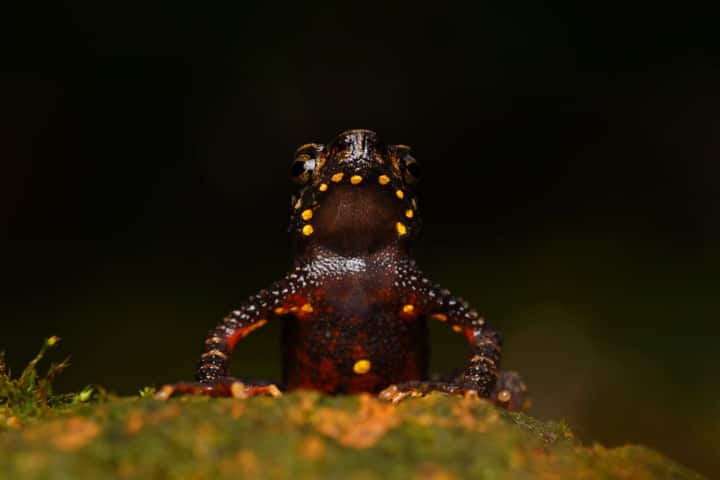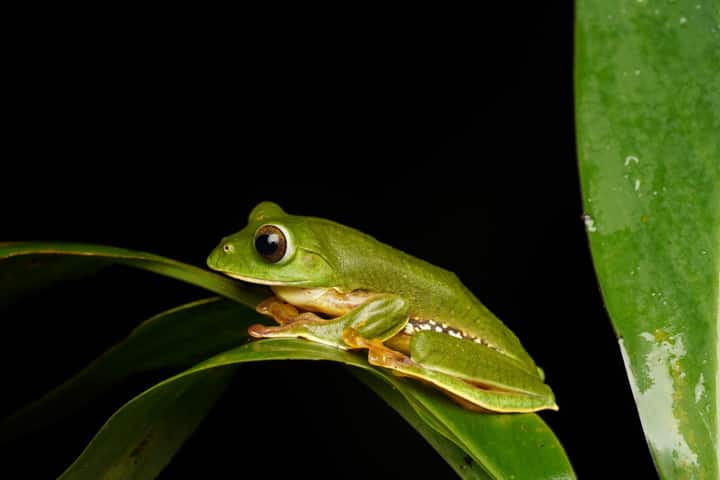With the monsoon season approaching, the Centre for Citizen Science and Biodiversity Informatics at the KSCSTE-Kerala Forest Research Institute has launched the mapping of frogs in the state.
The objective of the programme called “Monsoon Croaks BioBlitz” which started on June 5 and will end on September 2, is to map the diverse frog species through public participation. Monsoon is an appropriate period for mapping as during this crucial time these amphibians breed and their activity is at the peak.
Emphasising the importance of frogs in the ecosystems, Dr. Peroth Balakrishnan, HoD of Wildlife Biology and Coordinator of the CCSBI at KFRI observed: “They play a vital role in maintaining the ecological balance and they are excellent indicators of the health of our wetlands and ecosystems. By mapping their distribution, we can better protect their habitats and work towards conserving them.”
Outlining to India Narrative, the need for this intensive survey in a specific timeframe and designated area, Dr. Balakrishnan said: “Frogs are one of the most threatened groups of animals, facing numerous challenges due to habitat loss, climate change, pollution of water bodies, and the presence of microplastics.”

He stressed that frogs are found in forests as well as in plantations, farms and even in backyards. “However, there is a lack of information on the presence of frog species both inside and outside of forests. The survey aims to address this knowledge gap through a three-month-long community effort to map as many frog species as possible from Kerala.”
Highlighting on the need to know about those creatures dwelling outside the forests, Dr. Sandeep Das, an expert on endangered amphibians of the Western Ghats said: “Habitats outside protected areas are equally important for the survival of several red-listed species such as purple frog, Malabar torrent toad, Anaimalai Gliding Frog and others that are also found outside PA’s. The first step towards the conservation of these species is to identify key habitats, and this BioBlitz aims to accomplish just that.”
This community participation is novel as people cutting across all ages and irrespective of their location are roped in to take pictures of frogs, tadpoles, or recording the calls of different frog species they encounter. Balakrishnan told India Narrative that “this data can be uploaded via iNaturalist, the app known for hosting the largest crowd-sourced biodiversity inventory globally. All the research-grade observations are made become part of the Global Biodiversity Information Facility, which can be utilized to raise awareness about biodiversity, protect habitats, ascertain species distribution, enhance scientific literacy, contribute to climate change research, and inform policy decisions.”
Describing the activity as a “unique opportunity for citizens to actively contribute to the scientific understanding of our frog species”, Dr Syam Viswanath, KFRI Director said: “We encourage everyone to join us in this community-driven effort.” He added that this scientific endeavour offers a fun and informal opportunity for the public to learn together and share their enthusiasm for frogs.
While clicking pictures and recording calls, the KFRI release asked the participants to ensure switching on the location button of the device to map location of the observation made.
The top contributors in this activity will get a chance to join a workshop with experts to know more about frogs and take part in future field expeditions.




















